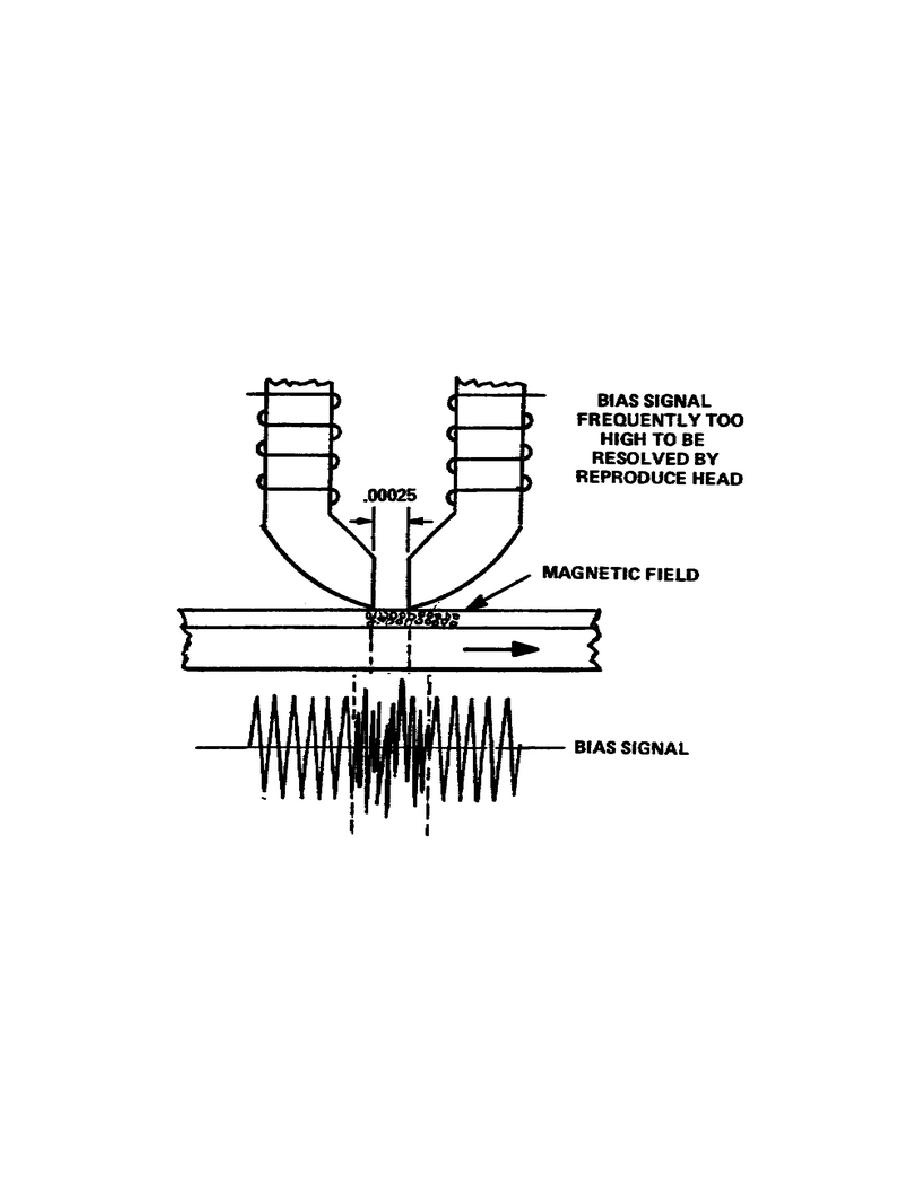
(1) A high frequency current several times that of the highest frequency to be recorded, is
applied to a tape, along with the audio signal. This results in a signal or low distortion. The high
frequency current, referred to as bias, also allows a higher signal-to-noise ratio.
(2) Bias combined with the audio signal and applied to the record head (fig 3-34), moves the
audio signal in direct proportion onto the magnetic tape.
(3) The amount of critical bias current varies with different types of tape recorders. Usually
the bias is adjusted to five times that of the highest audio frequency to be recorded, plus 5 KHz. Thus a
tape recorder with a frequency response up to 15,000 cps requires a bias frequency (current) of at least
80 KHz. Higher frequencies of bias give better signal-to-noise ratios, on the average, than do lower bias
frequencies. Too little bias results in high noise and distortion levels. Too much bias partially erases the
high frequencies as they are recorded.
Figure 3-34. Reproduce head gap showing an audio signal and bias current combined on the tape
45



 Previous Page
Previous Page
